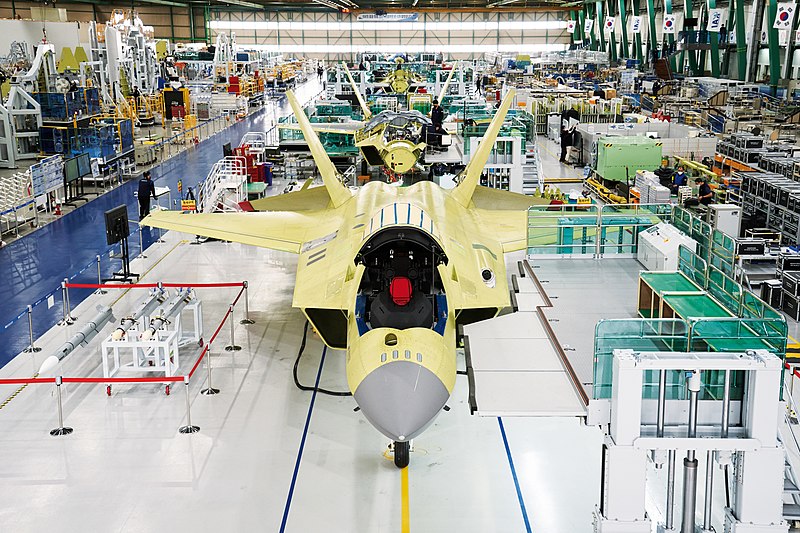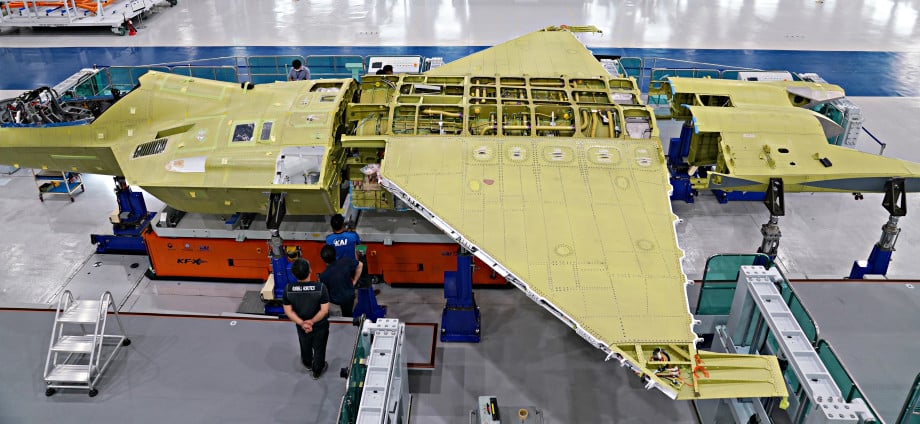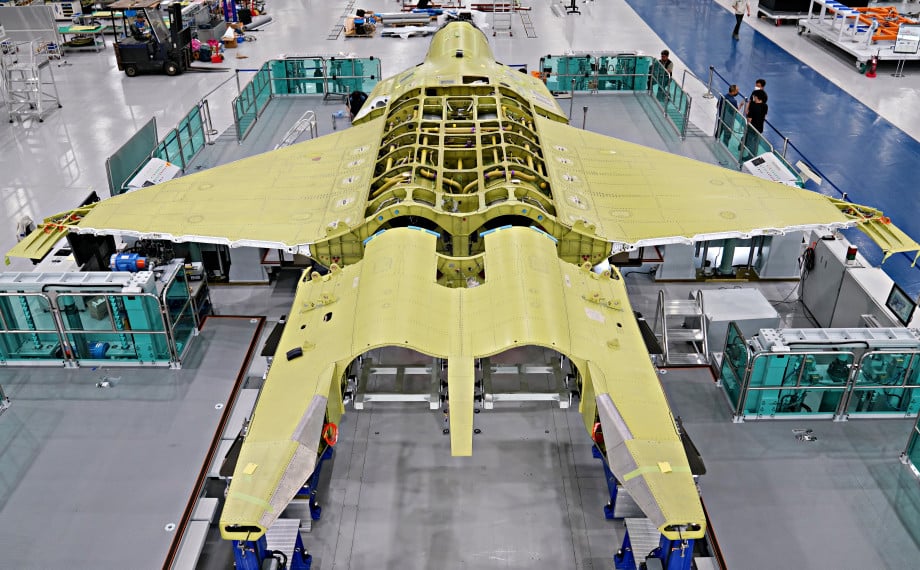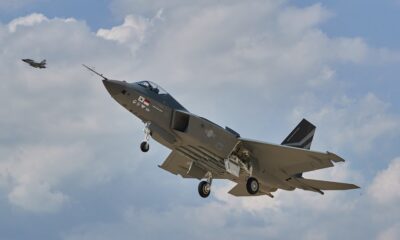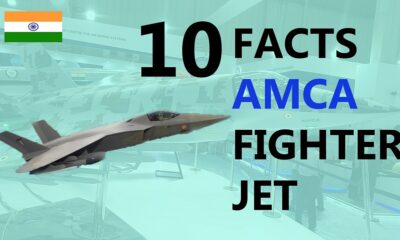Aviation
Top 8 facts about South Korean KF 21 Fighter jet: Specification, Partnerships, Weapons, and capacity
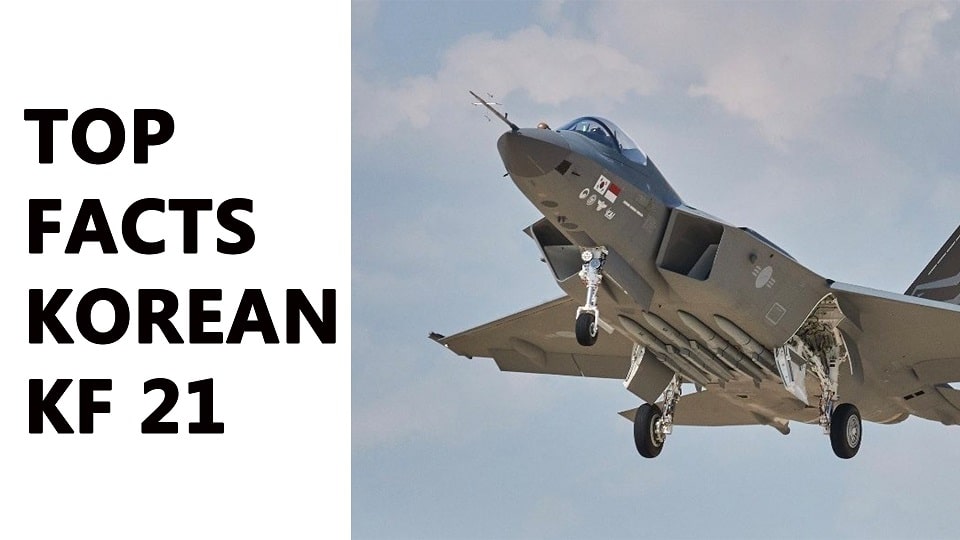
1. It took its first maiden flight in July 2022.
The Korean Aerospace Industries built the air superiority fighter KF 21 Bormae with Indonesia’s assistance. Its airframe is more stealthy than any fourth-generation fighter, but unlike fifth-generation fighters, it does not carry weapons through an internal bay.
It made its first flight from the production facility on July 19, 2022. The Korean name Bormae translates to “young Hawk” in English. At least 40 aircraft are expected to be delivered by 2028, according to the report. but it will also be offered on the international market.
2.It is a 4.5 Generation fighter jet.
To replace the outdated F4 and F5 fighter fleet, an alternative fighter is being developed for the Republic of Korea’s air force. It is a multirole fighter jet of the 4.5 generation, the source said. Initially, South Korea sought to develop a fighter aircraft that could outperform the Typhoon and Dassault Rafale.
Technically speaking, though, it necessitated extensive study and creation. They nevertheless made an effort to design a plane that would compete with the F16 Fighting Falcon in terms of combat range, a 34% longer airframe, and better weaponry.
3.Indonesia is a partener for KF 21 progrm.
Most nations cooperate in the program to lessen the burden of the financial aspects because it takes proper investments to develop any technology. In KF X, Indonesia joined the regional program in 2010 as per a committee agreement for 20% ownership. Later, however, KAI claimed that it had not made the agreed-upon payments. Later, an agreement was reached between Indonesia and South Korea to create a new cost-sharing plan by 2022.
4. KF 21 backed by Lockheed martin
The KF-21 program is supported by American titan Lockheed Martin, which is supplying the program with a number of design consultancy components. The staggering list of imported systems, along with numerous industrial-grade tools and consultancy to rely on for technical developments, includes everything from brake pads to flight controls systems, LRUs, landing gear, avionics, canopies, oxygen generators, radar, engines, ejection seats, and even the aircraft’s software management system.
As part of a purchase agreement, Lockheed Martin consented to transfer two dozen F-35A technologies. Four crucial technologies, AESA radar, infrared search and track (IRST), electro-optical targeting pod (EO TGP), and radio frequency identification (RFID), were, however, prohibited from export by the US government.
5. Stealth Fighter variant by 2035.
According to KAI, most of the systems may have been locally indigenous by the time the KF-21 Block III, which is expected to be a true stealth fighter variant by 2035, is released. However, until that time, the KF-21 is just a 4.5-generation fighter jet with elements of the 5th generation fighter, which is still being developed. Though the program is heavily supported by American defense industrial partners, which would still be under US control, must still be acknowledged. It will also take until 2035 before KAI has its own domestically developed technology.
6. Expensive military project in Korean history
Indonesia is said to be asked to reduce its share in the joint investment and development of the KF-21 by 5 percent and for more technology transfers than stipulated in the original agreement. The development of the KF-21 has been called the most expensive military project in Korean history, with a price tag of approximately 8.5 trillion won ($7.8 billion) for development alone. According to the government, 719 Korean businesses have participated in the development of the KF-21. About 65 percent of over 30,000 parts used in the prototype aircraft were made in Korea.
Features
The KF 21 can be operated by a single and double crew.
- It is 15 feet 5 inches tall, 55 feet 5 inches long, and has a wingspan of 36 feet 9 inches.
- It weighs 18,800 kg when empty and can support a maximum weight of 25,400 kg.
- It had a 2 GE 414 engine that can produce 57.8 kilonewtons without an afterburner and 97.9 kilonewtons with one.
- It has a range of 2,900 km and a top speed of Mach 1.81.
Speaking about the weapon package of the KF 21
- It has ten Hard points. which is equipped with air-to-air missiles such as the MBDA, AIM 120, Diehl IRIS, and AIM 9x.
- It features anti-ship missiles like AGM 84 Harpoon and air-to-ground missiles like Taurus and AGM-65.
- It is capable of transporting conventional and precision-guided bombs like JDAM, GBU, and KGGB.
Avionics
The KF 21 fighter jet has AESA radar, an infrared search and track system, an electro-optical targeting pod, datalink capabilities, a radiofrequency jammer, and many more characteristics. It is estimates the cost of the KF-21 at $65 million per unit.
Please share your thoughts on the Korean-built KF 21 fighter plane in the comments area.

Airlines
US DOT says Airlines must now pay automatic refunds for cancelled flights
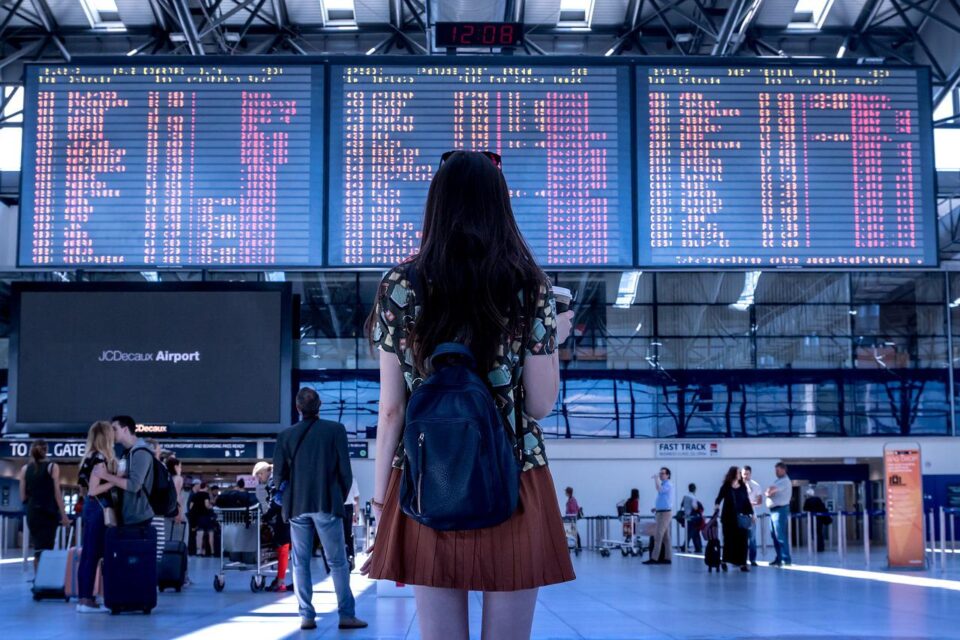
The U.S. Department of Transportation (DOT) has released a final regulation requiring airlines to quickly reimburse passengers with automatic cash refunds when owed, according to a statement made by the Biden-Harris Administration.
Under the new regulation, passengers will find it easier to get refunds when airlines dramatically alter or cancel flights, cause severe delays for checked baggage, or don’t supply the additional services they paid for.
According to a statement from the Biden-Harris Administration, the U.S. Department of Transportation (DOT) has published a final rule mandating airlines to promptly compensate customers with automatic cash refunds when they are eligible. The new rule would make it simpler for customers to receive refunds from airlines in cases when they drastically change or cancel flights, cause significant delays for checked luggage, or fail to provide the extra services they charged for.
Under the latest rule from the USDOT, passengers are guaranteed refunds in several scenarios:
- Canceled or Significantly Changed Flights: Passengers are entitled to refunds if their flight is canceled or significantly altered, including changes in departure or arrival times exceeding 3 hours domestically or 6 hours internationally, departures or arrivals from different airports, increased connections, downgrades in service class, or changes less accommodating to passengers with disabilities.
- Delayed Baggage Return: Passengers filing mishandled baggage reports can claim a refund for checked bag fees if their luggage is not returned within specific timeframes after flight arrival.
- Unprovided Extra Services: If airlines fail to deliver paid extra services like Wi-Fi, seat selection, or inflight entertainment, passengers can request refunds for those fees.
The final rule streamlines the refund process, ensuring it is:
- Automatic: Refunds are issued automatically without requiring passengers to request them.
- Prompt: Airlines must refund credit card purchases within seven business days and other payment methods within 20 calendar days.
- In Original Form of Payment: Refunds are provided in the original payment method used for purchase.
- Full Amount: Passengers receive full refunds minus the value of any portion of transportation already used, including government and airline fees.
Suggest banning family seating junk fees and ensuring that parents can travel with their kids at no additional cost. No airline promised to ensure fee-free family seating prior to efforts from President Biden and Secretary Buttigieg last year. Family seating is now guaranteed free of charge on four airlines, and the Department is working on a plan to eliminate family seating junk fees.
Propose to make passenger compensation and amenities mandatory so that travelers are taken care of when airlines cause flight delays or cancellations.
Airlines
The Nine Freedoms of the Air – Jetline Marvel
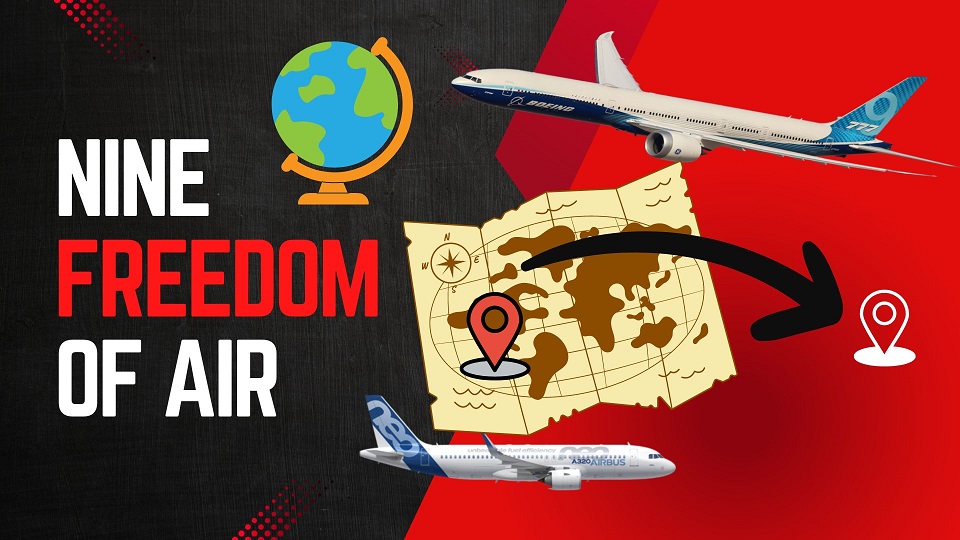
Most of us travel from one city to another city via road we need to get permission to that specific city if it is in another country like a visa or Road access permission to use its property for revenue purposes to carry passengers and Cargo. Similarly, In the airline Industry, it is also important that the Company have permission to fly and access that country whether it’s for stoppage flying above them, or Operating the passengers within that country This is called Freedom of the Air.
Some countries together they agree with certain conditions to access their Aerospace for to access for the airline to travel above their nation. If the bilateral is done for Their own countries’ airlines or other countries’ airlines. In this chapter, we understand how this thing is carried out. What all the condition has to look into that.
The Freedoms of the Air are international commercial aviation agreements (traffic rights) that grant a country’s airline(s) the privilege to enter and land in another country’s airspace. They were formulated in 1944 at an international gathering held in Chicago (known as the Chicago Convention) to establish uniformity in world air commerce. There are generally considered to be nine freedoms of the air.
Most nations of the world exchange first and second freedoms through the International Air Services Transit Agreement. The other freedoms,chase freedom airline miles when available, are usually established between countries in bilateral or multilateral air services agreements. The third and fourth freedoms are always granted together. The eighth and ninth freedoms (cabotage) have been exchanged only in limited instances
First Freedom:
The basic permission granted to an airline from one country (A) to fly through the airspace of another country (B)
Second Freedom:
The permission for a commercial airplane from country (A) to land and refuel (often called a technical stop) in another country (B).
Third Freedom :
The privilege for an airline to transport paying (Revenue) passengers from its home country (A) to another country (B).
Fourth Freedom
The rights for an airline to transport paying (Revenue )passengers from another country (B) to the airline’s home country (A).
Fifth Freedom
Fifth Freedom (also known as beyond rights): The rights for an airline to transport passengers from its home country (A) to a destination (B), then pick up and carry passengers to other international destinations (C).
Sixth Freedom:
Sixth Freedom (Combination of Third & Fourth Freedoms) The right for an airline to carry passengers or cargo between two foreign countries (B and C), provided the aircraft touches down in the airline’s home country (A).
Seventh Freedom:
The authorization for an airline to operate flights that start in a foreign country (B), skip its home country (A), and transport passengers to another international destination (C).
Eighth Freedom Air
The rights for an airline to transport passengers from one location within a country’s territory (B) to another point within the same country on a flight originating in the airline’s home country (A). This right is commonly referred to as cabotage and is notably scarce outside of Europe.
Ninth Freedom Air
The entitlement for an airline from a specific country (A) to begin a flight in a foreign country (B) and transport passengers from one location to another within that foreign country. This concept, also referred to as stand-alone cabotage, distinguishes itself from the traditional aviation definition of cabotage by not directly involving the airline’s home country.
Aviation
Air India’s B747 Makes Its Final Journey, Waving Farewell to Fans

In a poignant moment marking the end of an era in aviation history, Air India’s iconic Boeing 747 aircraft, affectionately known as the ‘Queen of the Skies,’ embarked on its ultimate journey from Mumbai’s international airport.
The departure, bound for Plainfield, USA, where it will undergo dismantling and part-stripping under the ownership of American AerSale, signals the closure of a storied chapter for the airline.
Once revered for transporting dignitaries ranging from prime ministers to presidents, the Boeing 747 has etched itself into aviation lore. Yet, as airlines worldwide pivot towards more contemporary and cost-effective aircraft, Air India’s decision to bid farewell to its remaining Boeing 747s reflects the pragmatic realities of today’s aviation landscape.
The sale of these majestic planes to AerSale represents a strategic move by Tata Group, Air India’s new custodian, towards optimizing operational efficiency and embracing modern industry standards. Out of the four aircraft sold, two will be repurposed into freighters, while the remaining pair will be meticulously disassembled to salvage valuable components.
The final flight from Mumbai witnessed a touching tribute as pilots performed a traditional ‘Wing Wave,’ symbolizing the conclusion of the Boeing 747‘s distinguished service with Air India. This poignant gesture encapsulates the deep sentiment attached to the aircraft’s departure and its significant contribution to the airline’s legacy.
As the Boeing 747 embarks on its journey to Plainfield, USA, nostalgia permeates the air, evoking memories of its maiden flight on March 22, 1971. Over five decades, Air India operated a total of 25 Boeing 747s, each leaving an indelible mark on the annals of aviation history.

